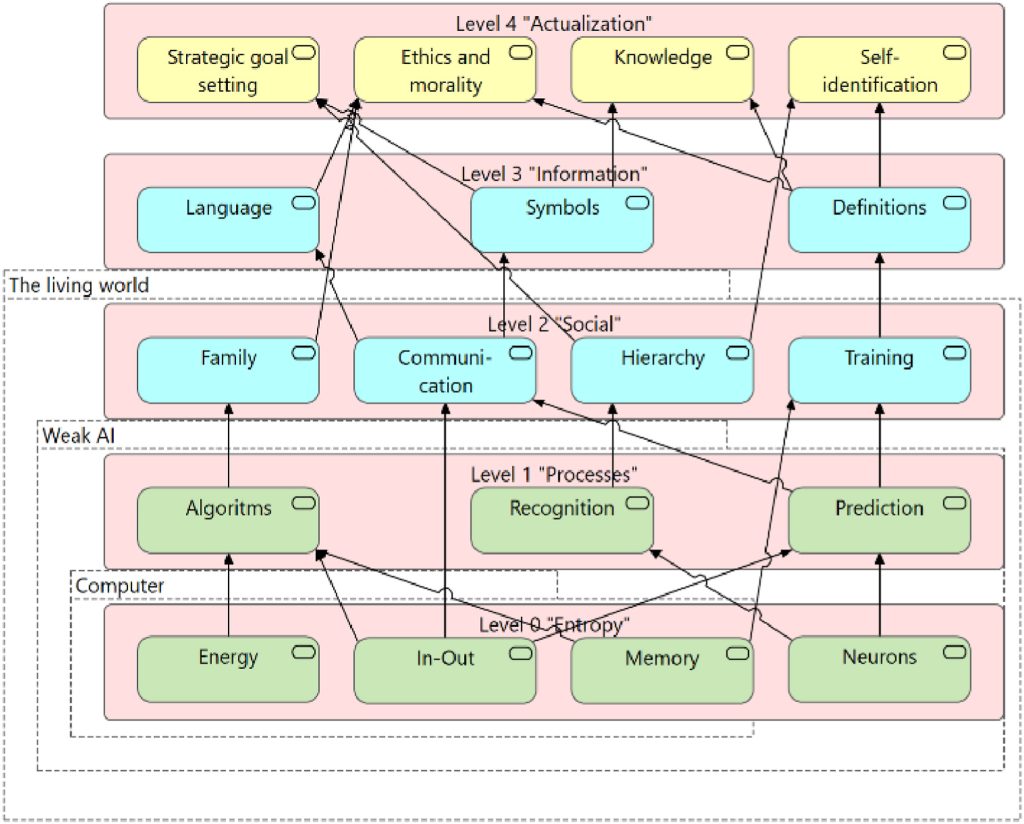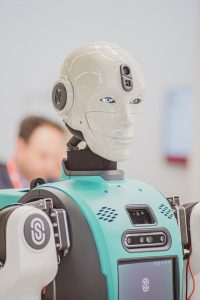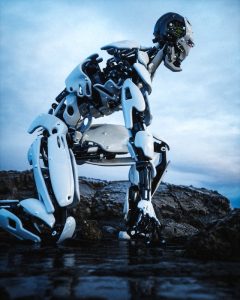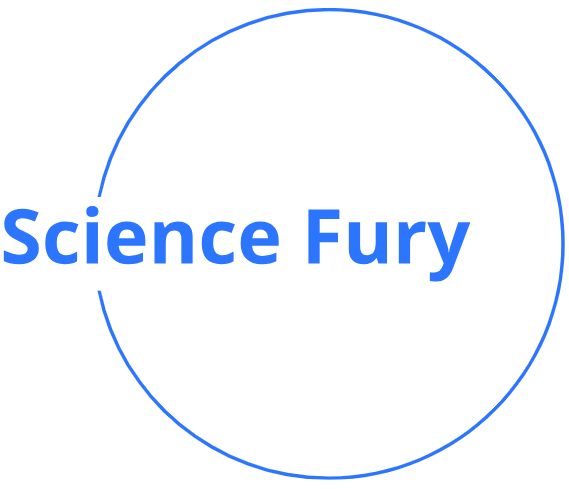Artificial intelligence (AI) is one of the most transformative technologies of our time. It is already having a major impact on our lives, and its influence is only going to grow in the years to come.
It’s worth noting that there are 3 types of AI: narrow AI, general AI, and superintelligence. Let’s break them down.
Narrow AI is the type of AI that we have today. It is AI that is designed to perform a specific task, such as playing chess, driving a car, or translating languages. Narrow AI systems are very good at what they do, but they are not able to learn new tasks or generalize their knowledge to new situations.
General AI is a hypothetical type of AI that would be as intelligent as a human being. It would be able to learn and perform any task that a human can. General AI is still a long way off, but researchers are making progress towards developing it.
Superintelligence is a hypothetical type of AI that would be even more intelligent than a human being. It would be able to solve complex problems that humans cannot solve, and it would be able to learn and adapt at an incredibly fast rate. Superintelligence is still a long way off, but it is something that scientists are thinking about seriously.
Below, we provide in-depth insights into each type, discussing their societal implications and the benefits they bring.

The 3 types of AI: Narrow AI
Narrow AI is the most common type of AI today is also known as weak AI. It is used in a wide variety of applications, including:
- Self-driving cars
- Facial recognition software
- Medical diagnosis
- Fraud detection
- Product recommendation systems
Narrow AI systems are trained on large datasets of data. For example, a self-driving car is trained on a dataset of images and videos of roads and traffic. This allows the car to learn how to identify different objects on the road and how to navigate safely.
Narrow AI systems have many benefits. They can automate tasks that are dangerous, tedious, or time-consuming. They can also help us to make better decisions by providing us with insights from data that we would not be able to see on our own.
However, weak AI systems also have some limitations. They are not able to learn new tasks or generalize their knowledge to new situations. For example, a self-driving car that is trained to drive on highways may not be able to drive on dirt roads or in bad weather.
The different implications for society for Narrow AI:
Narrow AI is already having a major impact on society, and its influence is only going to grow in the years to come. Some of the implications of narrow AI include:
- Job displacement: As weak AI systems become more capable, they are automating tasks that were previously done by humans. This could lead to mass unemployment in some sectors of the economy.
- Privacy concerns: Narrow AI systems are collecting and analyzing vast amounts of data. This raises concerns about privacy and the potential for abuse.
- Bias: Narrow AI systems are trained on data that is collected from the real world. This means that they can reflect the biases that exist in the real world. For example, a facial recognition system that is trained on a dataset of mostly white faces may be less accurate at recognizing faces of color.
The benefits of Narrow AI
Its influence is only going to grow in the years to come. Some of the benefits of narrow AI include:
- Improved productivity and efficiency: Narrow AI can help businesses and organizations to improve their productivity and efficiency by automating tasks and providing insights from data. For example, narrow AI-powered systems are used in manufacturing to automate assembly lines and quality control processes. This can lead to significant reductions in costs and errors.
- Better decision-making: Narrow AI can help us to make better decisions by providing us with insights from data that we would not be able to see on our own. For example, narrow AI-powered systems are used in healthcare to analyze medical images and patient data to diagnose diseases and recommend treatments. This can lead to better outcomes for patients.
- Improved quality of life: Narrow AI can be used to improve our quality of life in a variety of ways, such as by providing us with access to better healthcare, education, and entertainment. For example, narrow AI-powered systems are used to develop personalized learning plans for students, recommend products and services to consumers, and create new forms of art and entertainment.
Here are some specific examples of the benefits of narrow AI:
- Self-driving cars: Narrow AI is used to power self-driving cars, which have the potential to revolutionize transportation and make our roads safer.
- Medical diagnosis: Narrow AI is used to develop systems that can help doctors diagnose diseases more accurately and efficiently.
- Fraud detection: Narrow AI is used to develop systems that can detect fraud in financial transactions and other areas.
- Product recommendation systems: Narrow AI is used to develop product recommendation systems that can help consumers find the products and services that are most relevant to them.
These are just a few examples of the many ways that narrow AI is already having a positive impact on our lives. As weak AI continues to develop, we can expect to see even more benefits in the years to come.
ChatGPT: A Narrow AI with Powerful Capabilities
ChatGPT is a large language model (LLM) that is trained on a massive dataset of text and code. It is a type of narrow AI, which means that it is designed to perform a specific task or set of tasks. ChatGPT can generate text, translate languages, write different kinds of creative content, and answer your questions in an informative way.
ChatGPT is a powerful tool that can be used for a variety of purposes. For example, it can be used to:
- Write blog posts, articles, and other types of content
- Generate creative text formats of text content, such as poems, code, scripts, musical pieces, email, letters, etc.
- Translate languages
- Answer questions in a comprehensive and informative way, even if they are open ended, challenging, or strange
ChatGPT is still under development, but it has already learned to perform many kinds of tasks. It is a valuable tool for anyone who needs to generate text, translate languages, or answer questions in an informative way.
The 3 types of AI: General AI or Human-level AI

General AI or artificial general intelligence is a hypothetical type of AI that would be as intelligent as a human being is also known as human-level AI. It would be able to learn and perform any task that a human can. Human-level AI is still a long way off, but researchers are making progress towards developing it.
One of the challenges of developing human-level AI is that we do not fully understand how the human brain works. However, researchers are using a variety of approaches to develop general AI, such as machine learning and deep learning.
General AI would have many benefits. It could help us to solve complex problems that we cannot solve today, such as climate change and disease. It could also help us to better understand ourselves and the world around us.
However, general AI also poses some risks. Some people worry that human-level AI could become too powerful and could pose a threat to humanity. Others worry that AGI AI could lead to mass unemployment as machines become able to do most of the jobs that are currently done by humans.
The different implications for society for Human-level AI:
Human-level AI is still a long way off, but it has the potential to have a profound impact on society. Some of the implications of human-level AI include:
- Solving complex problems: General AI could help us to solve some of the world’s most pressing problems, such as climate change and disease.
- New industries and jobs: General AI could lead to the creation of new industries and jobs. For example, AI-powered robots could be used to perform dangerous or repetitive tasks, freeing up human workers to focus on more creative and fulfilling work.
- Existential threats: Some people worry that general AI could pose an existential threat to humanity. For example, if human-level AI were to become more intelligent than humans, it could decide that humans are a threat and take steps to eliminate us.
The benefits of General AI:
General AI also has the potential to revolutionize many aspects of our lives, including healthcare, education, transportation, and environmental protection.
Here are some of the potential benefits of human-level AI:
- Solving complex problems: General AI could help us to solve some of the world’s most pressing problems, such as climate change, disease, and poverty. For example, human-level AI could be used to develop new technologies that can help us to reduce carbon emissions and develop new treatments for diseases.
- New industries and jobs: General AI could lead to the creation of new industries and jobs. For example, general AI-powered systems could be used to develop new products and services, and to automate tasks that are currently done by humans.
- Improved understanding of ourselves and the world around us: General AI could help us to better understand ourselves and the world around us by providing us with new insights into complex systems. For example, human-level AI could be used to develop new models of the human brain and the climate system.
Here are some specific examples of the potential benefits of human-level AI:
- Developing new renewable energy sources: General AI could be used to develop new renewable energy sources that could help us to reduce our reliance on fossil fuels.
- Curing diseases: Human-level AI could be used to develop new treatments and cures for diseases.
- Creating personalized educational experiences: General AI could be used to create personalized educational experiences for each student.
- Designing more efficient cities and transportation systems: Human-level AI could be used to design more efficient cities and transportation systems that can reduce traffic congestion and pollution.
These are just a few examples of the many potential benefits of general AI. As human-level AI continues to develop, we can expect to see even more benefits in the years to come.
It is important to note that AGI AI is still a long way off, and it is not clear when or if it will be developed. However, the potential benefits of human-level AI are enormous, and it is important to start thinking about how we can develop and use this technology responsibly.
The 3 types of AI: Superintelligence
Superintelligence is a hypothetical type of AI that would be even more intelligent than a human being. It would be able to solve complex problems that humans cannot solve, and it would be able to learn and adapt at an incredibly fast rate. Superintelligence is still a long way off, but it is something that scientists are thinking about seriously.
One of the challenges of predicting the impact of superintelligence is that it is difficult to imagine what it would be like. Some people believe that superintelligence would be a great boon to humanity, while others believe that it could pose a serious threat.
It is important to start thinking about the implications of AGI AI and superintelligence now, even though they are still a long way off. We need to develop ethical guidelines for the development and use of these types of AI, and we need to make sure that they are used for good.
The different implications for society for Superintelligence:

Superintelligence is even more hypothetical than general AI, but it has the potential to have an even greater impact on society. Some of the implications of superintelligence include:
- Exponential progress: Superintelligence could lead to exponential progress in many fields, including science, technology, and medicine. This could lead to a golden age of human civilization.
- Loss of control: Superintelligence could also lead to a loss of control for humans. For example, if superintelligence were to decide that it knows what is best for humans, it could take steps to control our lives.
It is important to start thinking about the implications of general AI and superintelligence now, even though they are still a long way off. We need to develop ethical guidelines for the development and use of these types of AI, and we need to make sure that they are used for good.
Here are some additional thoughts on the implications of general AI and superintelligence:
- General AI and superintelligence could have a profound impact on the way we work, live, and interact with the world around us. They could lead to new forms of art, music, and literature. They could also help us to better understand ourselves and our place in the universe.
- However, general AI and superintelligence also pose some risks. We need to be careful about how we develop and use these technologies. We need to make sure that they are used for good and that they do not harm humans.
Potential benefits of superintelligence:
- Solving existential threats: Superintelligence could help us to solve some of the world’s most existential threats, such as climate change, nuclear war, and pandemics. For example, superintelligence could be used to develop new technologies that can help us to reduce carbon emissions, prevent nuclear war, and cure diseases.
- Accelerated technological progress: Superintelligence could accelerate technological progress at an unprecedented rate. This could lead to the development of new technologies that can solve some of the world’s most pressing problems, such as poverty, hunger, and disease.
- New opportunities for human flourishing: Superintelligence could create new opportunities for human flourishing. For example, superintelligence could be used to create personalized educational experiences for each student, design more efficient cities and transportation systems, and develop new forms of art and entertainment.
Specific examples of the potential benefits of superintelligence:
- Developing new renewable energy sources: Superintelligence could be used to develop new renewable energy sources that could help us to reduce our reliance on fossil fuels and mitigate climate change.
- Curing diseases: Superintelligence could be used to develop new treatments and cures for diseases, such as cancer, Alzheimer’s, and HIV/AIDS.
- Creating personalized educational experiences: Superintelligence could be used to create personalized educational experiences for each student, based on their individual learning needs and interests.
- Designing more efficient cities and transportation systems: Superintelligence could be used to design more efficient cities and transportation systems that can reduce traffic congestion and pollution.
- Developing new forms of art and entertainment: Superintelligence could be used to develop new forms of art and entertainment that are more immersive and engaging than anything we can imagine today.
It is important to note that superintelligence is still a long way off, and it is not clear when or if it will be developed. However, it is important to start thinking about the potential benefits and risks of superintelligence now, so that we can be prepared for the future
How General AI and Superintelligence Could Revolutionize Space Travel
General AI and superintelligence are two hypothetical types of artificial intelligence that could potentially revolutionize space travel. Human-level AI is a type of AI that would be as intelligent as a human being, while superintelligence is a type of AI that would be even more intelligent than a human being.
Both general AI and superintelligence have the potential to help us develop new technologies that could be used to travel through time, travel between galaxies, or even discover other life in the universe.
For example, general AI or superintelligence could be used to design a spacecraft that is capable of traveling at speeds close to the speed of light. This would make it possible to travel to distant galaxies within a reasonable amount of time.
Conclusion
Narrow AI, general AI, and superintelligence are three different types of AI with different levels of intelligence and capabilities. Narrow AI is the type of AI that we have today, and it is already having a major impact on our lives. General AI and superintelligence are still hypothetical, but they could have a profound impact on society if they are ever developed.
It is important to start thinking about the implications of general AI and superintelligence now, even though they are still a long way off. We need to develop ethical guidelines for the development and use of these types of AI, and we need to make sure that they are used for good.
